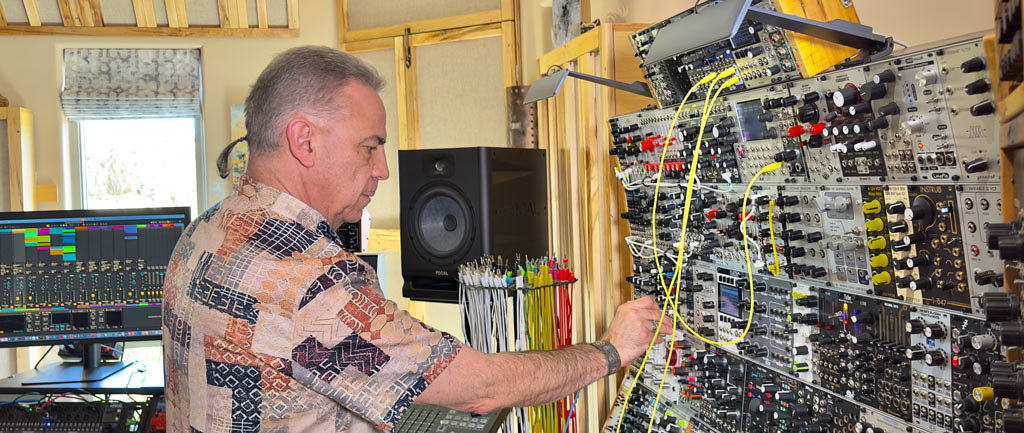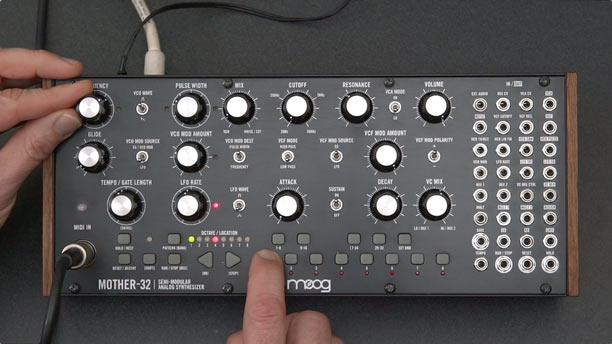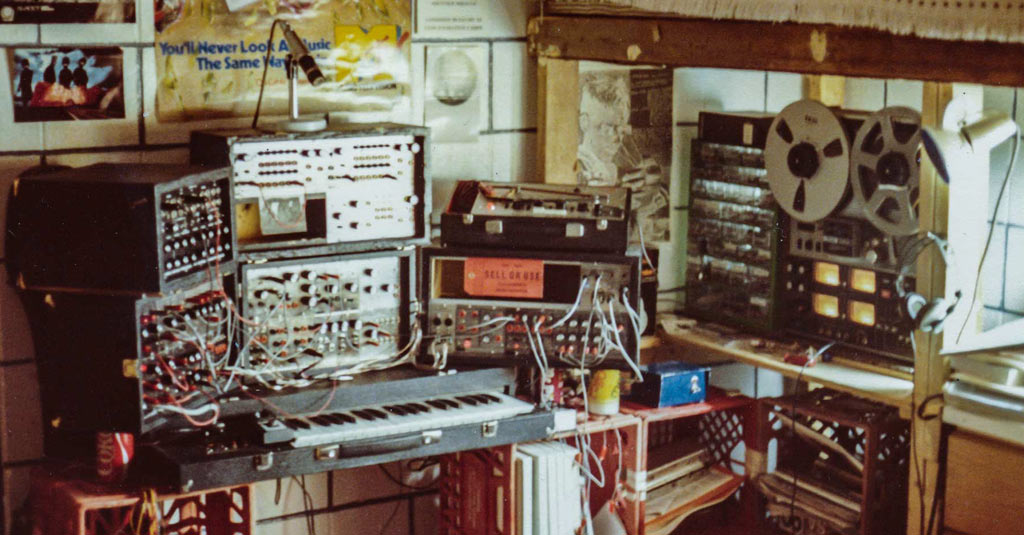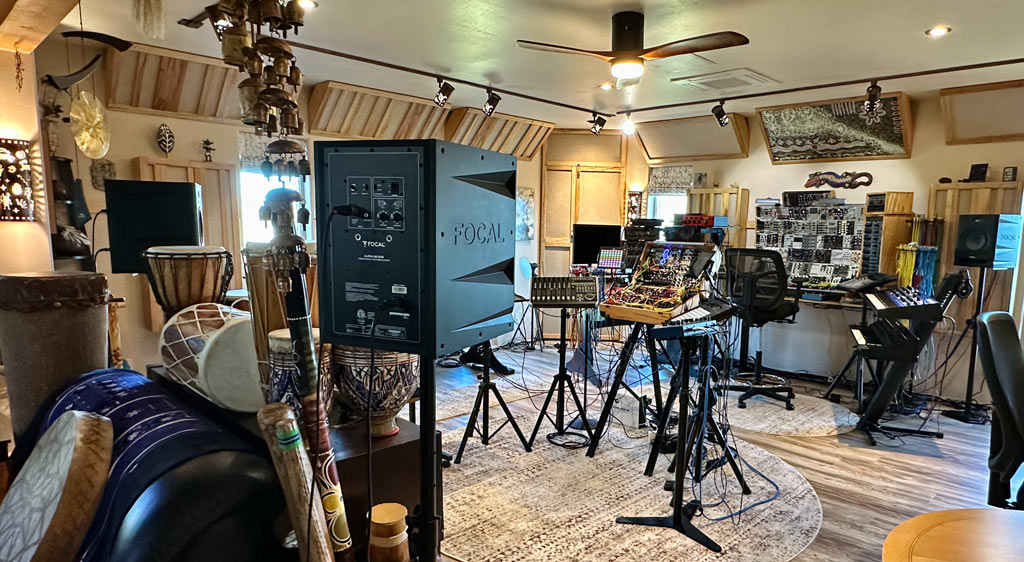Learn How to Patch, Compose For, Perform With, Record, and Mix Modular Synthesizers
Patching modular synthesizers. Combining computers and hardware synths. Performing electronic music live. Mixing for spatial audio, including quadraphonic and Dolby Atmos. Are these subjects that both excite, and – it’s okay to admit it; you’re among friends – perhaps intimidate you?
You’re not alone. But I have some good news: I have been doing all of the above for some time now – in some cases, decades – and I’m happy to share with you everything that I’ve learned.
What I’ve created for you:
This Learning Modular web site includes a modular synth glossary plus blog posts on modular synths and related subjects – all available for free.
- A companion web site for my musical persona Alias Zone includes performance videos, album previews, and more.
- I have a Patreon subscription channel with roughly 500 posts (and growing!) on subjects from individual module tutorials, to patching techniques, to synthesizer history, to song track and performance breakdowns, to why I’ve chosen the modules I have for my own systems – and more. Recent content also includes mixing in spatial (surround) audio as well as electronic music studio design.
- I also have a free newsletter. You can subscribe by clicking here. You are also automatically subscribed when you purchase one of my courses or subscribing to my Patreon channel (more on both below). Click here to access the previous issues.
- I co-wrote a book on modular synthesis – the critically acclaimed, best-selling Patch & Tweak– which explains each part of a modular synth starting with the very basics and progressing through advanced applications. The publisher Bjooks has also launched a companion Patch & Tweak Club website with access to almost all of their books as well as additional interviews and articles – some written by me.
- And, I’ve created a series of online courses which cover synthesis basics, as well as for different types of modular systems.
Here is a description of each of those courses, with links to their own web site:
Online courses:
I offer several different paths at different price points (including a free Basic Concepts course!), designed for different levels and types of modular user – including you. They cover:
- Eurorack, both beginner and intermediate
- semi-modular synths (Moog Mother-32)
- software modulars (Arturia Modular-V)
Click the button below to be taken to my dedicated courses site, where each is described in detail, including each course’s curriculum plus free preview movies for you to watch.
Features of each course:
- arranged as a set of individual video lessons, each dedicated to a specific concept to make it easier to quickly find the information you’re looking for
- designed to help you connect your eyes, ears, and brain to you intuitively get the sounds you’re after
- buy it once, and get immediate, permanent 24/7 streaming access: no limits or expiration dates; no subscriptions to renew
- no-questions-asked refund in you find a particular course is not right for you
Why I can help you:
I was attracted to electronic music when I was young, and wanted to figure out how to make those sounds myself. I took synthesis lessons as a teen in the 1970s, learning on a modular Steiner-Parker Synthasystem. A kit-based PAiA modular was my dorm room companion in college:
Soon after I graduated, I was working at the legendary synth manufacturer Sequential Circuits as their MIDI expert, where I contributed to several instruments and created Vector Synthesis. I went on to work for Digidesign, Marion Systems (Tom Oberheim), and was the chief engineer at Roland R&D US. (If you want to learn more about my background – from my early days designing synths to my recent album projects – visit the About page, which includes several in-depth interviews.) I was recently awarded a lifetime achievement award for my contributions to MIDI, and am now being recognized as one of the first independent musicians to build their own Atmos-capable studio. I also record albums and perform live – often in quad – with my hybrid modular + laptop systems.
tl;dr: I know how these machines work from the inside out – I’ve even designed them.
I’ve always enjoyed sharing what I’ve learned with others. I taught synthesis at UCLA Extension, was the technical editor for Music Technology and Recording magazines, and wrote columns for Keyboard magazine and Synths & Software.
I also have a lot of experience creating videos and books. Before I started Learning Modular, I recorded nearly 50 online courses on creating graphics for television and film for what was then lynda.com (now LinkedIn Learning), and my wife Trish and I co-wrote 13 books on that subject.
In short, I can distill complex subjects down to information artists can immediately put to use. I remember what it was like to know nothing, and to learn these subjects from scratch. Even my advanced posts make sure they bring along the beginner for the ride as well.
Your path forward:
You can continue to patch, perform with, and record modular synths the way most have: by randomly poking around, and hoping for happy accidents to magically appear.
Or, you can save time, money, and frustration by learning how these wonderful machines actually work on the inside, and even more important: how to make them work for you. Once you have mastered the fundamental concepts and techniques, the barriers between you and your synth will melt away, and it will become your partner – rather than your adversary – when you want to create your own sounds and music. Let’s get started!
I have been building modules and trying to learn this wonderful thing called modular for a few years now.
I probably went completely the wrong way around it, bought too much with too little knowledge, and ended up dazed and confused and ignorant to what I had, could do, had done wrong.
The many possibilities of all the modules that sat before me, with many doing more than one job in the same unit, just left me stuck and more confused than ever. I could not get my head around signal flow, and how it all ties together.
I have struggled, I mean really struggled. I really did not get it.
Your course is sorting those tangled thoughts and ideas and misconceptions for me like no other video I have seen. So many other videos make the mistake of assuming knowledge. Believe me, I have watched dozens – probably too many – all leading to greater confusion.
You do not fail in this area. You explain all that is needed in a clear and unpatronizing manner, with a great visual method. Your style really clears my head, and I am having eureka moments all the time where things start to join together and make sense. I know I will now “get there”.
The Mother-32 course was a lot of fun. I have always wanted to start building a modular synth, but part of what has been scaring me off from it – aside from the price – has been the seeming complexity. But after watching this course (and your previous course on the Arturia Modular V) I think I could put one together without too much trouble.
I really appreciated how you took things one step at a time, from showing off the basics of the Mother-32, to its more advanced features, to how to put together a basic Eurorack setup. If I had been doing one myself without watching this course, I probably would have overlooked the mixer, output module, buffered mult, precision adder, etc. in favor of flashier modules like oscillators and filters.
On the whole, I loved this video, and when I start putting together my own Eurorack I will be sure to check out this course and the other courses in the series again for pointers.
I think you did really well. You’re friendly and clearly love this stuff, which makes it easy to follow along and stay engaged.







